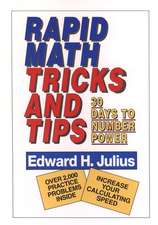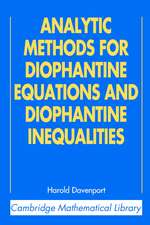The Book of Prime Number Records
Autor Paulo Ribenboimen Limba Engleză Paperback – 5 feb 2012
Preț: 701.41 lei
Preț vechi: 825.18 lei
-15% Nou
Puncte Express: 1052
Preț estimativ în valută:
134.22€ • 140.49$ • 111.71£
134.22€ • 140.49$ • 111.71£
Carte tipărită la comandă
Livrare economică 31 martie-14 aprilie
Preluare comenzi: 021 569.72.76
Specificații
ISBN-13: 9781468405095
ISBN-10: 1468405098
Pagini: 504
Ilustrații: XXIII, 479 p.
Dimensiuni: 155 x 235 x 26 mm
Greutate: 0.7 kg
Ediția:Softcover reprint of the original 2nd ed. 1989
Editura: Springer
Colecția Springer
Locul publicării:New York, NY, United States
ISBN-10: 1468405098
Pagini: 504
Ilustrații: XXIII, 479 p.
Dimensiuni: 155 x 235 x 26 mm
Greutate: 0.7 kg
Ediția:Softcover reprint of the original 2nd ed. 1989
Editura: Springer
Colecția Springer
Locul publicării:New York, NY, United States
Public țintă
ResearchCuprins
1. How Many Prime Numbers Are There?.- I. Euclid’s Proof.- II. Kummer’s Proof.- III. Polya’s Proof.- IV. Euler’s Proof.- V. Thue’s Proof.- VI. Two-and-a-Half Forgotten Proofs.- VII. Washington’s Proof.- VIII. Fiirstenberg’s Proof.- 2. How to Recognize Whether a Natural Number Is a Prime?.- I. The Sieve of Eratosthenes.- II. Some Fundamental Theorems on Congruences.- III. Classical Primality Tests Based on Congruences.- IV. Lucas Sequences.- V. Classical Primality Tests Based on Lucas Sequences.- VI. Fermat Numbers.- VII. Mersenne Numbers.- VIII. Pseudoprimes.- Addendum on the Congruence an?k ? bn?k (mod n).- IX. Carmichael Numbers.- X. Lucas Pseudoprimes.- XI. Last Section on Primality Testing and Factorization!.- 3. Are There Functions Defining Prime Numbers?.- I. Functions Satisfying Condition (a).- II. Functions Satisfying Condition (b).- III. Functions Satisfying Condition (c).- 4. How Are the Prime Numbers Distributed?.- I. The Growth of ?(x).- II. The nth Prime and Gaps.- III. Twin Primes.- IV. Primes in Arithmetic Progression.- V. Primes in Special Sequences.- VI. Goldbach’s Famous Conjecture.- VII. The Waring-Goldbach Problem.- VIII. The Distribution of Pseudoprimes and of Carmichael Numbers.- 5. Which Special Kinds of Primes Have Been Considered?.- I. Regular Primes.- II. Sophie Germain Primes.- III. Wieferich Primes.- IV. Wilson Primes.- V. Repunits and Similar Numbers.- VI. Primes with Given Initial and Final Digits.- VII. Numbers k × 2n ± 1.- VIII. Primes and Second-Order Linear Recurrence Sequences.- IX. The NSW-Primes.- 6. Heuristic and Probabilistic Results About Prime Numbers.- I. Prime Values of Linear Polynomials.- II. Prime Values of Polynomials of Arbitrary Degree.- III. Some Probabilistic Estimates.- IV. The Density of theSet of Regular Primes.- Conclusion.- Dear Reader.- Citations for Some Possible Prizes for Work on the Prime Number Theorem.- A. General References.- B. Specific References.- 1.- 2.- 3.- 4.- 5.- 6.- Conclusion.- Primes up to 10,000.- Index of Names.- Gallimaufries.- Addenda to the Second Edition.
Recenzii
Third Edition
P. Ribenboim
The New Book of Prime Number Records
"A number-theoretical version of the Guinness Book of Records . . . There is much mathematics to be found in these pages. These are records given here as well. This book is written with much wit. Experts may not find much that is new, but it is always worthwhile to view the history of a subject as a whole rather than a collection of isolated results."—MATHEMATICAL REVIEWS
P. Ribenboim
The New Book of Prime Number Records
"A number-theoretical version of the Guinness Book of Records . . . There is much mathematics to be found in these pages. These are records given here as well. This book is written with much wit. Experts may not find much that is new, but it is always worthwhile to view the history of a subject as a whole rather than a collection of isolated results."—MATHEMATICAL REVIEWS



















